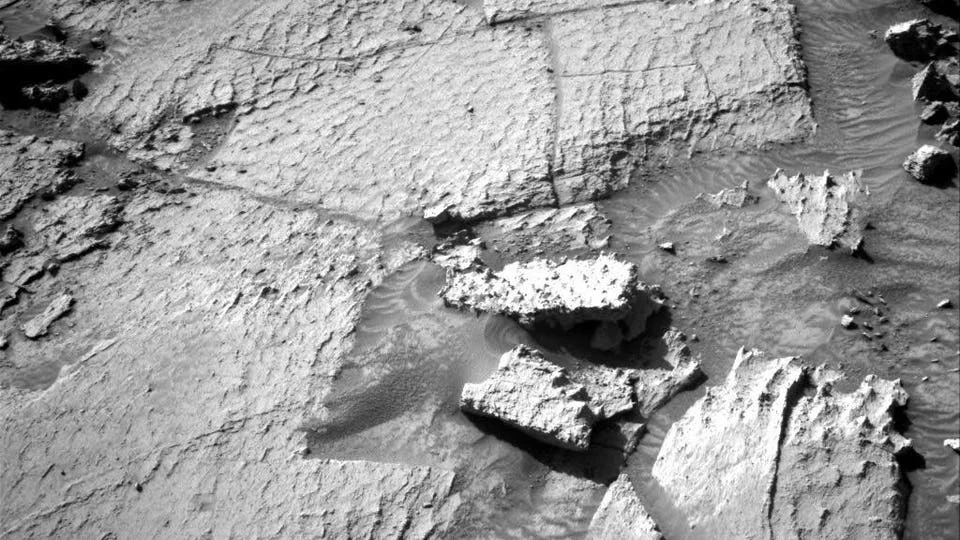
Martian Mystery: NASA’s Curiosity Rover Stumbles Upon ‘Honey and Waffle’ Structures, Sparking Debate on Mars’ Past
Scientists are buzzing over a recent discovery on Mars that's part delicious, part baffling. NASA's Curiosity rover, exploring the vast Gale Crater since 2012, has stumbled upon intriguing structures resembling a "patchwork of honeycombs, or maybe a patch of waffles." These peculiar hexagonal formations have ignited debate and speculation among researchers, potentially holding clues to the planet's ancient past and the possibility of past Martian life.
The discovery, highlighted in a NASA blog post by Dr. Catherine O'Connell-Cooper, a planetary geologist at the University of New Brunswick, showcases remarkably well-preserved polygonal shaped fractures. "We have spotted these before but usually not as well preserved and extensive as this," Dr. O'Connell-Cooper noted, emphasizing the unique nature of this find.
So, what are these 'honeycomb fractures,' and how did they form? One leading theory suggests a connection to ancient wet-dry cycles that occurred between 3.6 and 3.8 billion years ago. Similar to the cracks observed in drying lakebeds on Earth, these Martian formations may have resulted from repeated cycles of water filling and evaporating in an ancient lake within the Gale Crater. As the planet dried out, these patterns remained, preserved for billions of years.
Curiosity is now employing its arsenal of scientific tools to investigate these structures further. Using Laser-Induced Breakdown Spectroscopy (LIBS), the rover is analyzing the chemical composition of both the honeycomb ridges and nearby bedrock. By firing a laser pulse at the surface, Curiosity creates a tiny burst of plasma, allowing scientists to determine the elements present. Comparing the chemical makeup of the polygon structures with surrounding areas can provide a better understanding of their origin.
This isn't the first time that polygonal patterns have been observed on Mars. In 2021, NASA captured images of similar cracks near Mount Sharp within the Gale Crater. These earlier formations showed traces of sulphates, suggesting multiple cycles of lake filling and drying. Researchers theorize that these cycles not only shaped the landscape but also potentially created conditions conducive to the formation of complex organic molecules – the building blocks of life – similar to what happened on Earth.
Adding to the intrigue, in 2023, the Chinese Zhurong rover detected vast honeycomb structures hidden beneath the Martian surface. These massive cracks, measuring 70 meters across and surrounded by ice and mud, might have formed due to dramatic temperature fluctuations as Mars wobbled on its axis. This discovery further underscores the complex and dynamic climate history of the Red Planet.
The current discovery of these 'honey and waffle' patterns has rejuvenated speculation. As NASA's Curiosity rover continues its analysis on Mars, the scientific community eagerly awaits further insights into the origins and conditions. Could these formations provide clues about the possibility of ancient life on Mars? Or provide further insight into the planet's climate change history?
What secrets about Mars' past do you think these structures hold? Share your thoughts and theories in the comments below!